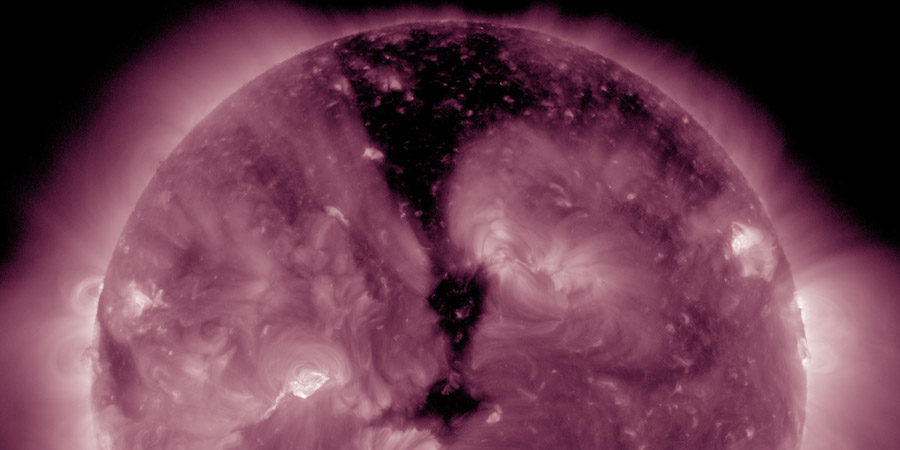Equatorial coronal hole faces Earth
Friday, 26 February 2016 23:42 UTC

The northern hemisphere polar coronal hole which we hoped would spark some aurora this week never really managed to influence Earth enough for some good auroral displays. The coronal hole was too far north on the solar disk and the most intense part of the solar wind stream went north of our planet. This means that the auroral activity was mostly quiet during the past few days. This could however change in the near future as an equatorial portion of this northern hemisphere polar coronal hole now faces Earth.
This northern hemisphere polar coronal hole really is gigantic but we now know that it never stretched down far enough to lower latitudes where the enhanced solar wind flow could reach Earth. The most intense solar wind stream went too far north of our planet to really affect us. Fear not as the geomagnetic conditions at our planet will likely increase in about three days from now as we now have an equatorial portion of this polar coronal hole facing Earth. Because this part of the coronal hole stretches all the way to the equator, we can pretty much guarantee that we will see an enhanced solar wind enviroment around our planet in about three days from now. Instead of blowing out solar wind that goes north of our planet, this portion of the coronal hole is expelling high speed solar wind right at our planet. We expect a brief window where we could reach active (Kp4) geomagnetic conditions once the solar wind stream arrives in about three days from now. High latitude sky watchers should be alert for enhanced auroral displays when the solar wind stream arrives.
Image: the coronal hole as seen by NASA SDO on 26 February, 23:30 UTC.
Thank you for reading this article! Did you have any trouble with the technical terms used in this article? Our help section is the place to be where you can find in-depth articles, a FAQ and a list with common abbreviations. Still puzzled? Just post on our forum where we will help you the best we can!
Latest news
Latest forum messages
Support SpaceWeatherLive.com!
A lot of people come to SpaceWeatherLive to follow the Sun's activity or if there is aurora to be seen, but with more traffic comes higher server costs. Consider a donation if you enjoy SpaceWeatherLive so we can keep the website online!

Space weather facts
| Last X-flare | 2025/03/28 | X1.1 |
| Last M-flare | 2025/04/01 | M5.6 |
| Last geomagnetic storm | 2025/03/27 | Kp5 (G1) |
| Spotless days | |
|---|---|
| Last spotless day | 2022/06/08 |
| Monthly mean Sunspot Number | |
|---|---|
| February 2025 | 154.6 +17.6 |
| Last 30 days | 128.5 -22.7 |


